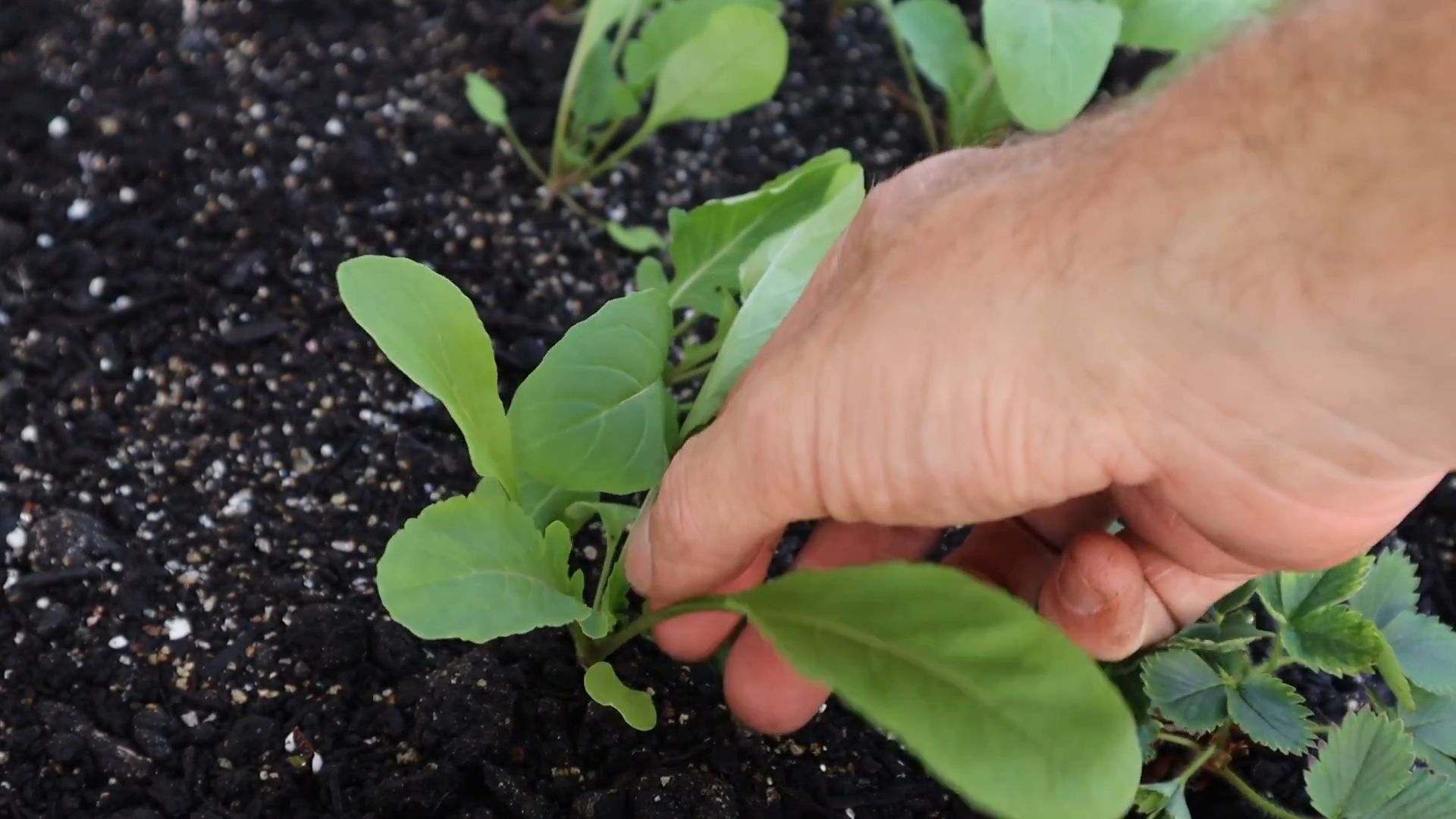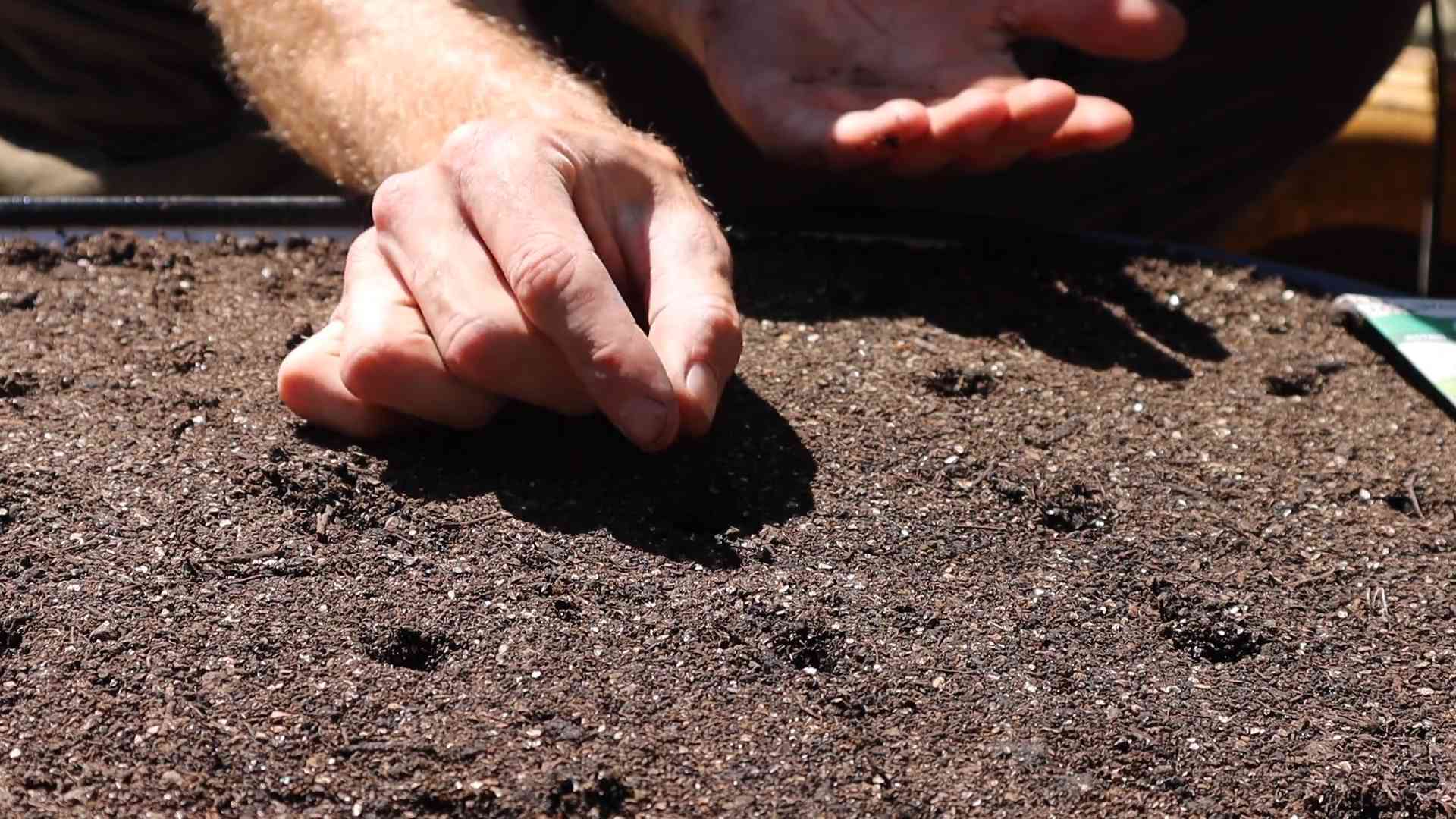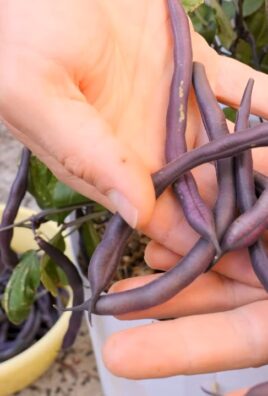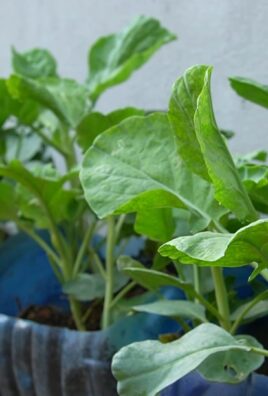Grow Arugula at Home? Absolutely! Imagine stepping into your backyard and harvesting peppery, fresh arugula for your salad, pizza, or pesto. No more trips to the grocery store for limp, overpriced greens. This isn’t just a dream; it’s a reality you can easily achieve with a few simple tricks and a little DIY spirit.
Arugula, also known as rocket, has a rich history dating back to Roman times, where it was prized for its distinctive flavor and believed to be an aphrodisiac. From ancient gardens to modern kitchens, this leafy green has consistently delighted palates. Today, with concerns about food miles and the desire for fresher, healthier options, growing your own arugula is more appealing than ever.
I know what you’re thinking: “I don’t have a green thumb!” But trust me, you don’t need one. This article is packed with easy-to-follow DIY hacks that will have you harvesting your own delicious arugula in no time. We’ll cover everything from seed selection to pest control, ensuring a bountiful harvest even if you’re a complete beginner. Why settle for store-bought when you can grow arugula at home and enjoy the freshest, most flavorful greens imaginable? Let’s get started!

Grow Your Own Spicy Arugula: A Beginner’s Guide
Hey there, fellow garden enthusiasts! I’m so excited to share my experience growing arugula at home. It’s surprisingly easy, even if you don’t have a huge garden. Arugula, also known as rocket, adds a peppery kick to salads, pizzas, and sandwiches. Plus, it’s a fast grower, so you’ll be enjoying fresh greens in no time. Let’s dive in!
Choosing Your Arugula Adventure: Seeds vs. Starts
Before we get our hands dirty, let’s talk about how you want to start your arugula journey. You have two main options:
* **Seeds:** This is the most common and cost-effective way to grow arugula. You can find arugula seeds at most garden centers or online.
* **Starts (Seedlings):** If you’re impatient (like me sometimes!) or want a head start, you can buy arugula seedlings from a nursery. This skips the germination phase and gets you closer to harvest.
I personally prefer starting from seeds because it’s more rewarding to watch them sprout and grow. But both methods work great!
Gathering Your Supplies: The Arugula Arsenal
To successfully grow arugula, you’ll need a few essential supplies:
* **Arugula Seeds or Seedlings:** Obviously! Choose a variety that suits your taste. Some are spicier than others.
* **Potting Mix:** Use a high-quality potting mix that drains well. Avoid using garden soil in containers, as it can become compacted.
* **Container (if growing in a pot):** Choose a container that’s at least 6 inches deep and wide. Arugula doesn’t need a huge pot, but it needs enough space for its roots to grow. Make sure it has drainage holes!
* **Watering Can or Hose:** For gentle watering.
* **Sunlight:** Arugula needs at least 6 hours of sunlight per day.
* **Optional: Fertilizer:** Arugula doesn’t need a lot of fertilizer, but a light feeding can boost growth.
* **Optional: Grow Light:** If you don’t have enough natural sunlight, you can use a grow light.
Planting Your Arugula: Getting Started
Okay, now for the fun part! Let’s get those seeds or seedlings into the soil.
Planting from Seeds:
1. **Prepare the Soil:** Fill your container with potting mix, leaving about an inch of space at the top. Gently pat down the soil to create a level surface.
2. **Sow the Seeds:** Sprinkle the arugula seeds evenly over the surface of the soil. You don’t need to bury them too deep; about 1/4 inch is perfect.
3. **Cover the Seeds:** Lightly cover the seeds with more potting mix.
4. **Water Gently:** Use a watering can or hose with a gentle spray to moisten the soil. Be careful not to wash away the seeds.
5. **Keep it Moist:** Keep the soil consistently moist but not soggy. You can cover the container with plastic wrap to help retain moisture until the seeds germinate.
6. **Find a Sunny Spot:** Place the container in a sunny location or under a grow light.
7. **Wait for Germination:** Arugula seeds typically germinate in 5-7 days. Once the seedlings emerge, remove the plastic wrap.
8. **Thin the Seedlings (if needed):** If the seedlings are too crowded, thin them out by gently snipping off the weaker ones at the base. This will give the remaining seedlings more room to grow. Aim for about 2-3 inches between plants.
Planting Seedlings (Starts):
1. **Prepare the Soil:** Fill your container with potting mix, leaving about an inch of space at the top.
2. **Make a Hole:** Dig a small hole in the soil that’s large enough to accommodate the root ball of the seedling.
3. **Remove the Seedling:** Gently remove the seedling from its container. If the roots are tightly bound, gently loosen them with your fingers.
4. **Place the Seedling:** Place the seedling in the hole and backfill with potting mix.
5. **Water Gently:** Water the seedling thoroughly.
6. **Find a Sunny Spot:** Place the container in a sunny location or under a grow light.
Caring for Your Arugula: Keeping it Happy
Once your arugula is planted, it’s important to provide it with the right care to ensure healthy growth.
* **Watering:** Arugula needs consistent moisture, especially during hot weather. Water deeply whenever the top inch of soil feels dry to the touch. Avoid overwatering, as this can lead to root rot.
* **Sunlight:** Arugula thrives in full sun (at least 6 hours per day). If you’re growing it indoors, use a grow light to supplement natural sunlight.
* **Fertilizing (Optional):** Arugula doesn’t need a lot of fertilizer, but a light feeding can boost growth. You can use a balanced liquid fertilizer diluted to half strength. Apply the fertilizer every 2-3 weeks.
* **Weeding:** Keep the area around your arugula free of weeds. Weeds can compete with your arugula for nutrients and water.
* **Pest Control:** Arugula is relatively pest-resistant, but it can be susceptible to aphids and flea beetles. If you notice any pests, you can try spraying them with insecticidal soap or neem oil.
* **Bolting:** Bolting is when the plant starts to produce flowers and seeds. This can happen when the weather gets too hot. Bolting can make the leaves taste bitter. To prevent bolting, try to keep your arugula plants cool and well-watered. You can also plant arugula in partial shade during the hottest part of the summer.
Harvesting Your Arugula: Time to Enjoy!
The best part of growing arugula is harvesting it and enjoying its delicious flavor!
* **When to Harvest:** You can start harvesting arugula leaves when they are about 3-4 inches long.
* **How to Harvest:** Use scissors or a knife to cut the leaves off at the base of the plant. You can harvest individual leaves or cut the entire plant down to about an inch above the soil.
* **Cut and Come Again:** Arugula is a “cut and come again” crop, which means that it will continue to produce new leaves after you harvest it.
* **Succession Planting:** To ensure a continuous supply of arugula, sow new seeds every 2-3 weeks.
* **Storage:** Freshly harvested arugula is best used immediately. However, you can store it in the refrigerator for a few days. To store arugula, wrap it in a damp paper towel and place it in a plastic bag.
Troubleshooting: Common Arugula Problems
Even with the best care, you might encounter a few problems while growing arugula. Here are some common issues and how to address them:
* **Yellowing Leaves:** This can be caused by overwatering, underwatering, or nutrient deficiencies. Make sure you’re watering your arugula properly and fertilizing it if needed.
* **Slow Growth:** This can be caused by lack of sunlight, poor soil, or cold temperatures. Make sure your arugula is getting enough sunlight and that the soil is well-draining.
* **Bitter Taste:** This can be caused by bolting. To prevent bolting, keep your arugula plants cool and well-watered.
* **Pests:** Aphids and flea beetles are common pests of arugula. You can control them with insecticidal soap or neem oil.
Arugula Varieties to Explore
While standard arugula is fantastic, there’s a whole world of arugula varieties to discover! Here are a few to consider:
* **’Slow Bolt’:** As the name suggests, this variety is more resistant to bolting, making it ideal for warmer climates.
* **’Wild Rocket’:** This variety has a more intense, peppery flavor than standard arugula.
* **’Italian Cress’:** This variety has a milder flavor and is often used in salads.
Enjoying Your Homegrown Arugula: Recipe Ideas
Now that you’ve harvested your delicious arugula, it’s time to enjoy it! Here are a few ideas:
* **Salads:** Arugula adds a peppery kick to any salad. Try it with goat cheese, walnuts, and a balsamic vinaigrette.
* **Pizzas:** Sprinkle fresh arugula on top of your pizza after it comes out of the oven.
* **Sandwiches:** Add arugula to your sandwiches for a burst of flavor.
* **Pesto:** Make a delicious arugula pesto to use on pasta, sandwiches, or as a dip.
* **Soups:** Add arugula to soups just before serving for a peppery garnish.
Growing arugula at home is a rewarding experience that anyone can enjoy. With a little bit of care and attention, you can have a continuous supply of fresh, peppery greens right at your fingertips. Happy gardening!

Conclusion
So, there you have it! Growing your own arugula at home is not only achievable, but it’s also incredibly rewarding. Forget those wilted, overpriced greens from the grocery store. Imagine stepping out your back door or onto your balcony and harvesting a handful of peppery, fresh arugula whenever you need it. The difference in taste and texture compared to store-bought is simply undeniable. This DIY trick is a must-try for anyone who appreciates fresh, flavorful ingredients and wants to add a touch of homegrown goodness to their meals.
Why is this a must-try? Because it puts you in control. You control the quality of the soil, the amount of sunlight, and the watering schedule, ensuring that your arugula is grown in the best possible conditions. You also avoid the pesticides and herbicides that are often used in commercial farming. Plus, it’s a fantastic way to reduce your carbon footprint and support sustainable living.
But the benefits don’t stop there. Growing arugula at home is also a surprisingly easy and low-maintenance project. Even if you’re a complete beginner, you can successfully grow arugula with just a few simple steps. And once you get the hang of it, you can experiment with different varieties and growing techniques to find what works best for you.
Looking for some variations? Consider growing different types of arugula, such as wild arugula, which has a more intense flavor, or baby arugula, which is milder and more tender. You can also try growing arugula in containers of different sizes and shapes to see how it affects the yield. Another fun experiment is to grow arugula alongside other herbs and vegetables, such as basil, lettuce, and radishes, to create a thriving mini-garden. You can even succession plant your arugula, sowing new seeds every few weeks, to ensure a continuous supply of fresh greens throughout the growing season.
Don’t be afraid to experiment with different growing mediums. While soil is the most common choice, you can also grow arugula hydroponically or in coco coir. Hydroponics is a method of growing plants without soil, using nutrient-rich water solutions. Coco coir is a natural fiber made from coconut husks that provides excellent drainage and aeration.
Growing arugula at home is more than just a way to get fresh greens; it’s a way to connect with nature, learn new skills, and enjoy the satisfaction of growing your own food. It’s a simple pleasure that can bring joy and nourishment to your life.
So, what are you waiting for? Grab some seeds, find a sunny spot, and get ready to experience the joy of growing your own arugula. We’re confident that you’ll be amazed at how easy and rewarding it is. And once you’ve harvested your first batch of homegrown arugula, be sure to share your experience with us! We’d love to hear your tips, tricks, and favorite ways to use your fresh greens. Share your photos and stories on social media using #HomegrownArugula and let’s inspire others to join the movement! Let us know what worked for you and what challenges you faced. Your feedback will help us improve this guide and help other gardeners succeed. Happy growing!
Frequently Asked Questions (FAQ)
How long does it take for arugula to grow?
Arugula is a fast-growing plant, which is one of the reasons it’s so popular among home gardeners. You can typically expect to harvest your first leaves within 3-4 weeks of planting. The exact time will depend on factors such as the variety of arugula, the growing conditions, and the time of year. Warmer temperatures and plenty of sunlight will generally speed up the growth process.
What kind of soil is best for growing arugula?
Arugula prefers well-drained soil that is rich in organic matter. A slightly acidic to neutral pH (around 6.0 to 7.0) is ideal. Before planting, amend your soil with compost or other organic matter to improve its fertility and drainage. If you’re growing arugula in containers, use a high-quality potting mix that is specifically designed for vegetables. Avoid using garden soil in containers, as it can become compacted and prevent proper drainage.
How much sunlight does arugula need?
Arugula thrives in full sun, which means it needs at least 6 hours of direct sunlight per day. However, it can also tolerate partial shade, especially in hot climates. If you live in an area with intense summer heat, providing some afternoon shade can help prevent the leaves from becoming bitter. When growing arugula indoors, place it near a sunny window or use grow lights to provide adequate light.
How often should I water arugula?
Arugula needs consistent moisture to thrive. Water your plants regularly, especially during dry periods. Aim to keep the soil consistently moist, but not waterlogged. Overwatering can lead to root rot, so make sure your soil has good drainage. A good rule of thumb is to water deeply whenever the top inch of soil feels dry to the touch.
How do I harvest arugula?
You can start harvesting arugula leaves as soon as they are large enough to eat, typically when they are about 2-3 inches long. Simply snip off the outer leaves with scissors or your fingers, leaving the inner leaves to continue growing. This cut-and-come-again harvesting method allows you to enjoy a continuous supply of fresh arugula throughout the growing season. Avoid harvesting more than one-third of the plant at a time to ensure it continues to produce new leaves.
What are some common pests and diseases that affect arugula?
Arugula is generally a pest-resistant plant, but it can be susceptible to certain pests and diseases, such as flea beetles, aphids, and downy mildew. Flea beetles are small, jumping insects that can create tiny holes in the leaves. Aphids are small, sap-sucking insects that can cause the leaves to become distorted and yellow. Downy mildew is a fungal disease that can cause white or gray patches on the leaves. To prevent these problems, practice good garden hygiene, such as removing weeds and debris, and avoid overwatering. If you do encounter pests or diseases, you can try using organic pest control methods, such as insecticidal soap or neem oil.
Can I grow arugula in containers?
Yes, arugula is an excellent choice for container gardening. Choose a container that is at least 6 inches deep and has drainage holes. Fill the container with a high-quality potting mix and plant your arugula seeds or seedlings. Place the container in a sunny location and water regularly. Container-grown arugula may need more frequent watering than arugula grown in the ground, as the soil in containers tends to dry out more quickly.
How do I prevent arugula from bolting (going to seed)?
Bolting is a natural process that occurs when plants are stressed, typically due to heat or lack of water. When arugula bolts, the leaves become bitter and the plant stops producing new leaves. To prevent bolting, keep your arugula plants well-watered, especially during hot weather. You can also provide some afternoon shade to help keep the plants cool. Succession planting, as mentioned earlier, is another great way to avoid bolting, as you’ll always have a fresh supply of young, tender leaves.
What are some ways to use homegrown arugula?
Arugula is a versatile ingredient that can be used in a variety of dishes. It’s delicious in salads, sandwiches, and wraps. You can also add it to pizzas, pasta dishes, and soups. Arugula pesto is a flavorful alternative to traditional basil pesto. Or, simply sauté arugula with garlic and olive oil for a quick and easy side dish. The possibilities are endless!
Is growing arugula at home worth it?
Absolutely! Growing your own arugula at home is a rewarding experience that offers numerous benefits. You’ll have access to fresh, flavorful greens whenever you need them, you’ll save money on groceries, and you’ll reduce your environmental impact. Plus, it’s a fun and educational activity that can be enjoyed by people of all ages. So, give it a try and see for yourself!





Leave a Comment